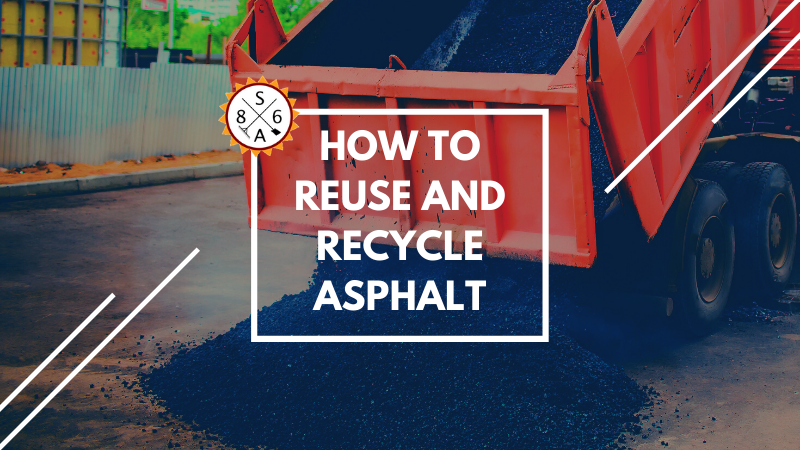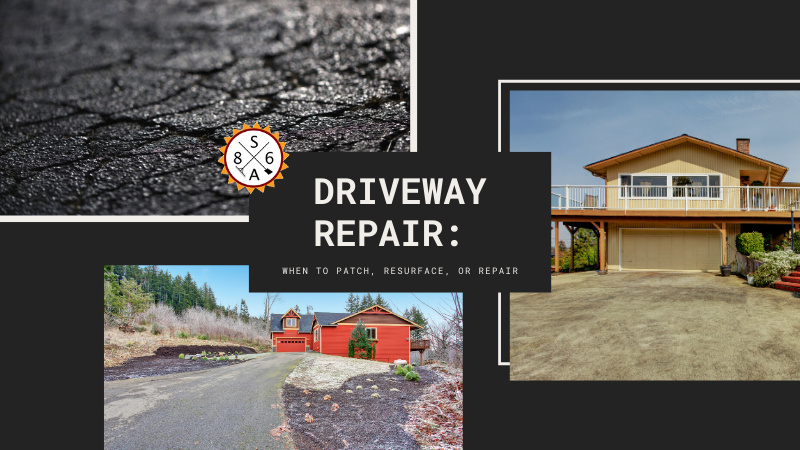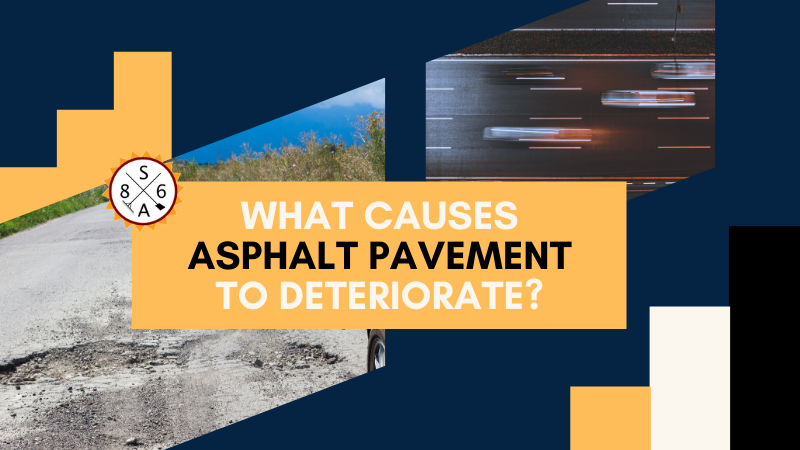
How To Reuse and Recycle Asphalt
During the past few years, there has been a massive push to develop green practices, particularly when it comes to the construction industry. Now, this practice has been woven into all aspects of construction, from construction to residential spaces and even paving. This has provided massive benefits for the environment, as everyone works to preserve the planet.
One of the major shifts has been the growth of asphalt recycling. When people think about recyclable materials, they usually think about plastic, cardboard, and glass; however, pavement and asphalt are actually the most recycled materials in the country. Annually, around 80 million tons of asphalt is recycled. This goes to show that asphalt is considered a green technology. It is also environmentally friendly. For those wondering how they can recycle and reuse asphalt, there are a few points to keep in mind.
How To Recycle Asphalt
Asphalt is a part of a recycling category that is called C&D, which stands for construction and demolition. Some of the other products that are included under this heading include wood, glass, and fixtures from buildings. This type of waste is treated differently from typical recycling products that come from a household, such as plastic. This means that it might be a bit harder to find a recycling center that can handle asphalt; however, there are numerous asphalt contractors that have connections with these recycling centers, so it is a good idea to reach out to them.
In this fashion, it is important to be open and honest with the asphalt contractors that recycling asphalt that might not need to be used is a priority. Therefore, talk with them about ideas regarding where and how they can take the asphalt.
One of the first places to look for a recycling center that can handle asphalt is the local solid waste management district. These are relatively common throughout most cities; however, people should call them to make sure they can handle asphalt, as not everyone can. There are also helpful search tools on the internet that can help people find places that can accept asphalt recycling. Even asphalt shingles from the roof can be recycled; however, it is important to make sure the asphalt recycling plan accepts these shingles, as not all plants do.
Recycling Asphalt Is Important
Back in 2002, one of the first organizations to announce that they would be recycling asphalt was the Federal Highway Administration. They announced that they would be reusing and recycling asphalt throughout their roadway projects whenever possible to minimize the impact on the environment. In this manner, this is the biggest reason why it is so important to recycle asphalt. It saves the environment. Furthermore, the FHWA realized that there was actually a functional benefit to using recycled asphalt. The roads appeared to last longer.
Furthermore, recycling asphalt is important because it saves money. If projects can use recycled asphalt, they do not need to invest in brand new materials, which are more expensive. When this is combined with the environmental impact of using recycled products, such as asphalt, the reasons to reuse and recycle this material become clear.
Recycle Asphalt During Future Projects
This is a brief overview of how to recycle asphalt and why it is so important. Those who are looking to recycle asphalt should reach to asphalt contractors or take a look at local solid waste management plants. These sources usually have information on where and how to recycle asphalt as well as asphalt repair services.
During the past few years, there has been a massive push to develop green practices, particularly when it comes to the construction industry. Now, this practice has been woven into all aspects of construction, from construction to residential spaces and even paving. This has provided massive benefits for the environment, as everyone works to preserve the planet.
One of the major shifts has been the growth of asphalt recycling. When people think about recyclable materials, they usually think about plastic, cardboard, and glass; however, pavement and asphalt are actually the most recycled materials in the country. Annually, around 80 million tons of asphalt is recycled. This goes to show that asphalt is considered a green technology. It is also environmentally friendly. For those wondering how they can recycle and reuse asphalt, there are a few points to keep in mind.
How To Recycle Asphalt
Asphalt is a part of a recycling category that is called C&D, which stands for construction and demolition. Some of the other products that are included under this heading include wood, glass, and fixtures from buildings. This type of waste is treated differently from typical recycling products that come from a household, such as plastic. This means that it might be a bit harder to find a recycling center that can handle asphalt; however, there are numerous asphalt contractors that have connections with these recycling centers, so it is a good idea to reach out to them.
In this fashion, it is important to be open and honest with the asphalt contractors that recycling asphalt that might not need to be used is a priority. Therefore, talk with them about ideas regarding where and how they can take the asphalt.
One of the first places to look for a recycling center that can handle asphalt is the local solid waste management district. These are relatively common throughout most cities; however, people should call them to make sure they can handle asphalt, as not everyone can. There are also helpful search tools on the internet that can help people find places that can accept asphalt recycling. Even asphalt shingles from the roof can be recycled; however, it is important to make sure the asphalt recycling plan accepts these shingles, as not all plants do.
Recycling Asphalt Is Important
Back in 2002, one of the first organizations to announce that they would be recycling asphalt was the Federal Highway Administration. They announced that they would be reusing and recycling asphalt throughout their roadway projects whenever possible to minimize the impact on the environment. In this manner, this is the biggest reason why it is so important to recycle asphalt. It saves the environment. Furthermore, the FHWA realized that there was actually a functional benefit to using recycled asphalt. The roads appeared to last longer.
Furthermore, recycling asphalt is important because it saves money. If projects can use recycled asphalt, they do not need to invest in brand new materials, which are more expensive. When this is combined with the environmental impact of using recycled products, such as asphalt, the reasons to reuse and recycle this material become clear.
Recycle Asphalt During Future Projects
This is a brief overview of how to recycle asphalt and why it is so important. Those who are looking to recycle asphalt should reach to asphalt contractors or take a look at local solid waste management plants. These sources usually have information on where and how to recycle asphalt as well as asphalt repair services.




